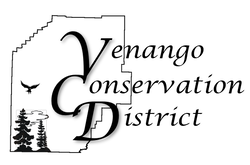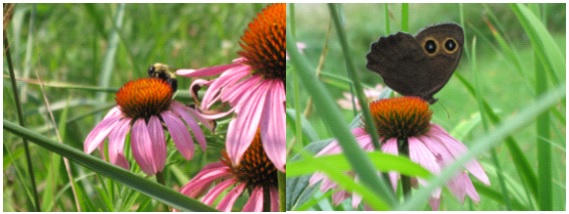|
The purple cone flower, like the ones pictured, are native to eastern and central North America. There are an herbaceous flowering plant of the genus Echinacea. They bloom from mid-summer through early fall.
There are nine species of Echinacea. Some species have been used for medicinal purposes. Native Americans use the roots as a traditional healing herb. Today the roots are used for herbal medicines. Two species are considered by the US Fish and Wildlife as endangered. They are E. Tennesseensis and E. Laevigata. The name “cone flower” is rooted from the Greek echinos which means “sea urchin”. Some Native Americans call them “elk root” because they observed that elk would seek out and eat the roots when hurt or unwell. We call them “cone flowers” because their petals are reflexed. At the Venango Conservation District offices, we planted purple cone flowers because they are a native plant. Our purpose was to provide wildlife food for our garden visitors. Butterflies and bees consume the nectar of our cone flowers, and in the winter, goldfinches eat up the seeds. Cone flowers also have network of root fibers so they can bind soil which protects against erosion.
2 Comments
5/6/2023 10:13:18 am
I wanted to express my gratitude for your insightful and engaging article. Your writing is clear and easy to follow, and I appreciated the way you presented your ideas in a thoughtful and organized manner. Your analysis was both thought-provoking and well-researched, and I enjoyed the real-life examples you used to illustrate your points. Your article has provided me with a fresh perspective on the subject matter and has inspired me to think more deeply about this topic.
Reply
1/25/2024 04:57:37 am
Kohl's values the feedback of our customers and has created a survey to gather your thoughts. By participating in the survey at https://www.kohlsfeedback.page/survey/, you will have the opportunity to share your opinions and be entered for a chance to win a $1000 Gift Coupon. Your input is important to us as we strive to improve and provide the best experience for our customers. We appreciate your time and look forward to hearing from you.
Reply
Leave a Reply. |
CATEGORIESs
All
Archives
April 2024
|


